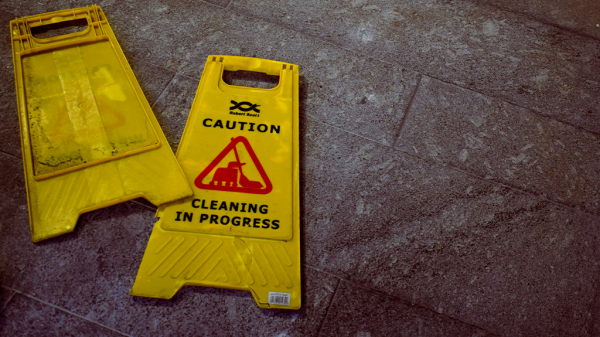
Bulls Don’t Get Bailed Out
I’ve been following the wall street freak out since it began, and I’m not totally sure I minded the $700 billion dollar rescue plan devised by Paulson, but it got me to wondering…
Wondering why, if there was an upside to holding the illiquid assets for the feds and the tax payer, why larger private money wasn’t being pooled to do exactly the same thing.
Imagine Mark Cuban, George Soros, Rupert Murdock, Warren Buffet, Bill Gates, and other private financial giants create a new holding company exclusively for these illiquid assets.
The fed could line up the financial scenario in a favorable way for the group of private investors as the carrot. Paulson could head the venture, assemble the board, and resell the assets on the market as a value is established.
I’m just thinking that the speed in which private money can act without the federal red tape would allow the markets to correct themselves, remove the need for further government intervention, and the free market prevails.
Just a thought
Benn Rosales is the Founder and CEO of The American Genius (AG), national news network. Before AG, he founded one of the first digital media strategy firms in the nation has received the Statesman Texas Social Media Award and is an Inman Innovator Award winner. He has consulted for numerous startups (both early- and late-stage), and is well known for organizing the digital community through popular offline events. He does not venture into the spotlight often, rather he believes his biggest accomplishments are the talent he recruits and develops, so he gives all credit to those he's empowered.





































Bloggeries
September 29, 2008 at 3:18 pm
Definitely a possibility. Glad to see someone is REALLY thinking out of the box.
BawldGuy
September 29, 2008 at 3:25 pm
The ultimate amount needed is, who knows? $100B? $300B? I love the idea of private money, ala Lone Star, (buyers of Merril Lynch’s paper). Your question is THE question.
Frankly, as long as the gov’t can buy at low, low prices, as a taxpayer, I want those profits. In fact, I want the plan to dedicate by law, all profits to reducing our debt.
Most of the huge investors and groups, are ready to pounce, as you suggest between the lines. However, they’re also in somewhat of a ‘protect the principal’ mode too.
I hate the idea of using socialist approach, but is it really socialist when the result is huge ‘market’ profits for the gov’t, while markets healed by action? I hate this, but if private guys don’t step up, (though I’m not buyin’ into the whole ‘we’re gonna die tomorrow’ crisis thinkin’) the gov’t has to get it done.
You’ve asked the central question, Benn.
Benn Rosales
September 29, 2008 at 3:29 pm
Jeff, if our leaders cannot deliver us to the financial promised land, the private guys could solve this problem in the snap of two fingers. Cap needed is closer to 1.2 trillion total, but they could operate on the same 250/250/350 principal as cash is needed- basically the same plan the house voted on today w/o the bs. The Fed could create a line of credit for the private investors, and I bet you money, the “market” will want a piece too… imagine the buy in possibilities.
Jamie Geiger
September 29, 2008 at 3:36 pm
Just heard that Warren Buffet is buying……………..
Lani Anglin-Rosales
September 29, 2008 at 3:45 pm
I like what Benn said in person just a bit ago:
BawldGuy
September 29, 2008 at 3:52 pm
Benn — Exactly. Though the actual amount of capital required is a mystery to me at this point, the initial amount should be what you mentioned, give or take.
Again, they’d have to perceive their principal not in danger. I’m with you on this, as I said earlier.
How long does it take to make a ton of money when your buy in was 25¢ on the dollar? I could believe a script where many of these loans, especially in a recovering market, would be sold for a profit more than once.
Missy Caulk
September 29, 2008 at 4:07 pm
Benn, IMO if the private investors thought they “could” make money they would be buying them or loaning them.
Dan Connolly
September 29, 2008 at 4:22 pm
Well maybe if the private investors were given some tax incentives they would do it! I would rather see the feds waiving taxes for private individuals than spending tax revenues to accomplish the same goals.
Benn Rosales
September 29, 2008 at 4:30 pm
Missy, they’re on the sidelines because no one has presented the opportunity- they’re not into bailing out the federal government as a charity, so unfortunately, the government will have to step up and make the pitch.
@Dan oh yeah, the fed could pave the way for borrowing at impressive levels, and soften the capital gains tax in the future- the question is, how much do you want this liquidity issue resolved and is the federal goverment willing to put its money where its mouth is?… sure they are, this is a 5 minute hash out by phone for Paulson, they all speak the same language and Paulson knows exactly what what these investors want to hear.
@Jeff funny how no one is pitching it, because, I’m sure the domino of private investors would be off the charts, optimism would be abundant in the market- everyone loves real estate 😉
Corey
September 29, 2008 at 5:16 pm
How about seeing if any large insurance firms will insure this bailout money? If not, there is your answer as to whether we as tax payers should be behind any sort of bailout plan. The answer to inflation is not $700+ billion plus in more inflation added to the system.
Bob
September 29, 2008 at 5:43 pm
Like AIG?
Bob
September 29, 2008 at 5:46 pm
Actually one of the arguments this morning for why the bailout was needed was that private money via sovereign investment funds would swoop in and buy up US assets, so the Feds need to do it so we (the U.S.) reap the profits instead of others.
Louis Cammarosano
September 29, 2008 at 7:56 pm
Benn
Its a good thought, however I believe there is ABSOLUTELY NOTHING stopping private investors from bailing out the banks other then a lack of sheer stupidity on the part of the individuals you mentioned.
No one in their right mind would pay the type of money that the government was planning on paying for right to own these toxic loans. And certainly if they did the covenants of accountability and oversight would be far tighter than what the government was proposing.
Thomas Johnson
September 29, 2008 at 9:15 pm
Looks like this stuff is bid 70 ask 30 and Paulson was going to buy at 55. Why 25 points too much? The private money is there for 20-30. Small problem with those prices. No annual bonuses, and maybe no company to run. The independent review/audit portion of the bill kills it from Paulson’s view. They will be held accountable for OVERPAYING by as much as 50%, and by the way that doesn’t free up any money for lending to main street and commercial paper and payrolls and retirement funds and so on… which is why the left and the right agreed-no deal. Now that everyone knows that the emperor has no clothes, we will have a Happy New Year and they will try a new scheme later this week. I wonder if Nancy Pelosi regrets skipping town this summer for her book tour when Congress could have been doing the people’s business.
Esko
September 29, 2008 at 10:01 pm
Benn,
That would be one way to straighten the mess out. What probably keeps them on the sidelines is that it’s very hard to figure out accurate value for these exotic mortgage bonds. They were chopped up and whatnot in the pooling process and even the issuers appear not to know what exactly they are worth. That’s scary.
Benn Rosales
September 29, 2008 at 10:23 pm
Esko, indeed, in a world where the government spends $6 to process $3 you can understand why the amount of cash the government is requesting is high in comparision to what may actually be needed- but yet, the world seems to think the us government can effeciently sort out the paper to reveal a true asset, I’m sure they can, but I have a feeling a private board could do it more effeciently, and at a better cost than than the government.
I am not sure the private sector has really been given a chance to sort our some realities, but the free market can find a way to sort this out if given the incentive by the federal government.
I’m not proposing a bank bailout, I’m proposing the largest private land grab in global history.
Mike Langford
September 29, 2008 at 10:42 pm
Benn,
Lani sent me a link to your post as she thought I might enjoy the conversation.
I think you hit on the reason why such a private money solution is not in the offing in your second sentence. The “upside” of the feds taking the “risk challenged” debt of the books is “less downside”.
What’s the upside potential in buying distressed debt at 40 cents on the dollar of maturity value? Private investors might double their money over the course of a few years or more but in reality the Gates and Buffetts are much better suited to creating value than rescuing value.
There’s that and the fact that it would take the entire Forbes 400 and then some to free up enough capital to pull off such a feat of capitalistic heroism.
Thanks for the opportunity to participate.
Mike
P.S. What I think will be real interesting to see is if GAAP takes another look at the mark to market rule that created the urgency to get the stuff off the books.
Paula Henry
September 29, 2008 at 11:22 pm
Benn – I absolutely love this idea and laugh at your $6 to process $3. Private money could do this with much less than estimated, do it quicker and yes, everyone does love real estate! So why not?
BawldGuy
September 30, 2008 at 11:08 am
I remain convinced most private capital is not jumping in order to preserve capital until they perceive it’s time again to invest for return. Unless the price is 25¢ on the dollar, give or take, they’re not jumpin’ in. Lone Star proved that several weeks ago.
Of course, ’till the gov’t eliminates itself as a buyer for much more that that 25¢, ain’t nothin’ gonna happen on the private side, ‘cuz the banks ain’t stupid.
Jack Burns
October 5, 2008 at 6:01 pm
#10 Corey’s comment on private money in the financial mess. Many insurance companies already have too many questionable mortgages in their portfolios! Watch for the next bailout of this mess to be large insurance companies!
Jack